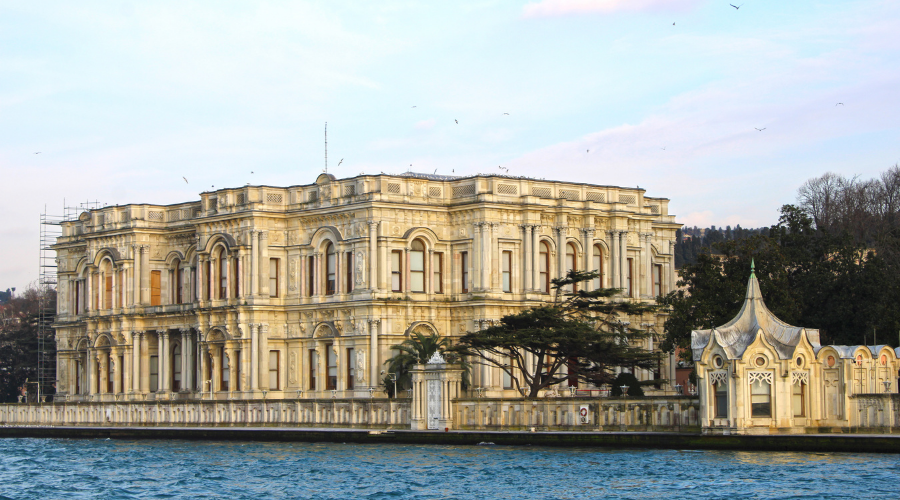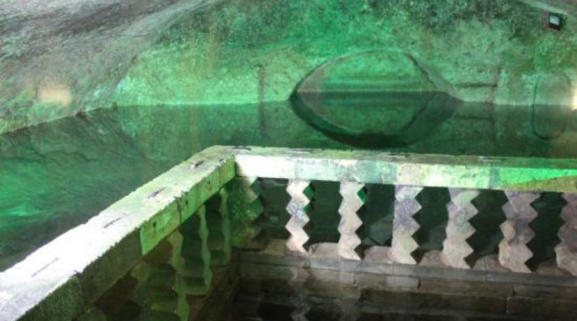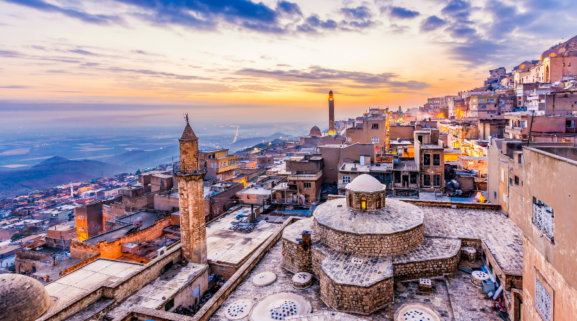BEYLERBEYI PALACE
BEYLERBEYI PALACE
Istanbul has been the center of attention for centuries with its unique geography. As a result of this interest, every empire that ruled the region left a piece of itself. In this way, we have the opportunity to examine different architectures and artifacts today. Beylerbeyi Palace is one of the most interesting structures that have survived to the present day. The construction of this magnificent palace, whose architecture was undertaken by Serkis Balyan, started in 1861 and was completed 4 years later. Traveler Inciciyan mentioned that this palace was known as the Cross Gardens in the Byzantine period and as the Has Garden in the Ottoman period.
It is possible to see structures from that period in various parts of Anatolia, since the sultans were constantly on expeditions during the Ottoman Empire and a significant part of their lives were spent on the road. Beylerbeyi Palace is also known as a palace used by the sultans in the summer months. It is possible to see the mixture of two cultures in the palace, since the interaction of culture and art with the West was quite high at the time it was built.
At that time, Beylerbeyi Palace was often used to host foreign heads of state. III. Napoleon’s wife Eugenie, Montenegrin ruler Nikola, Iranian Shah Nasrüddin and Rıza Pahlavi, Austro-Hungarian Emperor Franz Joseph are among the main names staying here. This tradition continued in the Republican period and Atatürk hosted his state guests here.
The palace can be entered from 3 different points and one of these entrances is called Haremlik and the other is called Selamlık. The palace has 29 separate rooms. The embroideries, used furniture and carpets in the interior of the palace represent a perfect craftsmanship. Materials for the interior design of the palace were brought from many countries such as Egypt, China, France and Japan. Thus, it is possible to see the east-west synthesis throughout the palace.
Another feature that distinguishes this palace from other palaces of the period is that there are two pavilions with pools, the Yellow Kiosk and the Marble Kiosk, in its garden, and the Stable Kiosk, where the horses in the palace are cared for. The garden of the palace was given as much importance as its interior design and the garden of the palace was adorned with hundreds of years old trees. These mansions have managed to survive to the present day.
WHERE IS BEYLERBEYI PALACE? HOW TO GO?
The palace is located in the Beylerbeyi district. For transportation, public buses, minibuses or private vehicles can be used via Üsküdar. The name of the stop where it is located is referred to as Beylerbeyi Palace.
OPENING HOURS AND ENTRANCE FEE FOR BEYLERBEYI PALACE:
The palace is only closed on Mondays. Apart from this, it is possible to visit every day of the week between 09:00-18:00.
Since the palace is located by the sea, it has been a point of interest from the past to the present. Visitors can do their breakfast in the garden of this palace.
The entrance fee to the palace is 50 TL in full and the student fee is 25 TL. The Museum Card is valid at the entrance to the palace.
THE HISTORY OF BEYLERBEYI PALACE
Such a palace, which has existed for centuries, has seen many rulers. According to the legend: Sultan Abdulhamid III. was invited to the opening of an exhibition in France by Napoleon. He ended his visit by visiting many cities in Europe, but only a name, a silhouette remained in his mind; that is Eugenie, the wife of the King of France… This was of course not the last time they saw each other. Eugenie, who will go to the opening of the Suez Canal after 2 years, first wanted to visit Istanbul. Thereupon, Sultan Abdulhamid had the Beylerbeyi Palace prepared for the Empress and took care of all the preparations himself. He has prepared dozens of valuable gifts and gold to greet him.Sultan spent the night with Eugenie and they have irresistible feelings for each other. The passionate love of these two people, who do not understand each other’s language and culture, was mentioned and proved years later in the book called Blue Column Palace.



